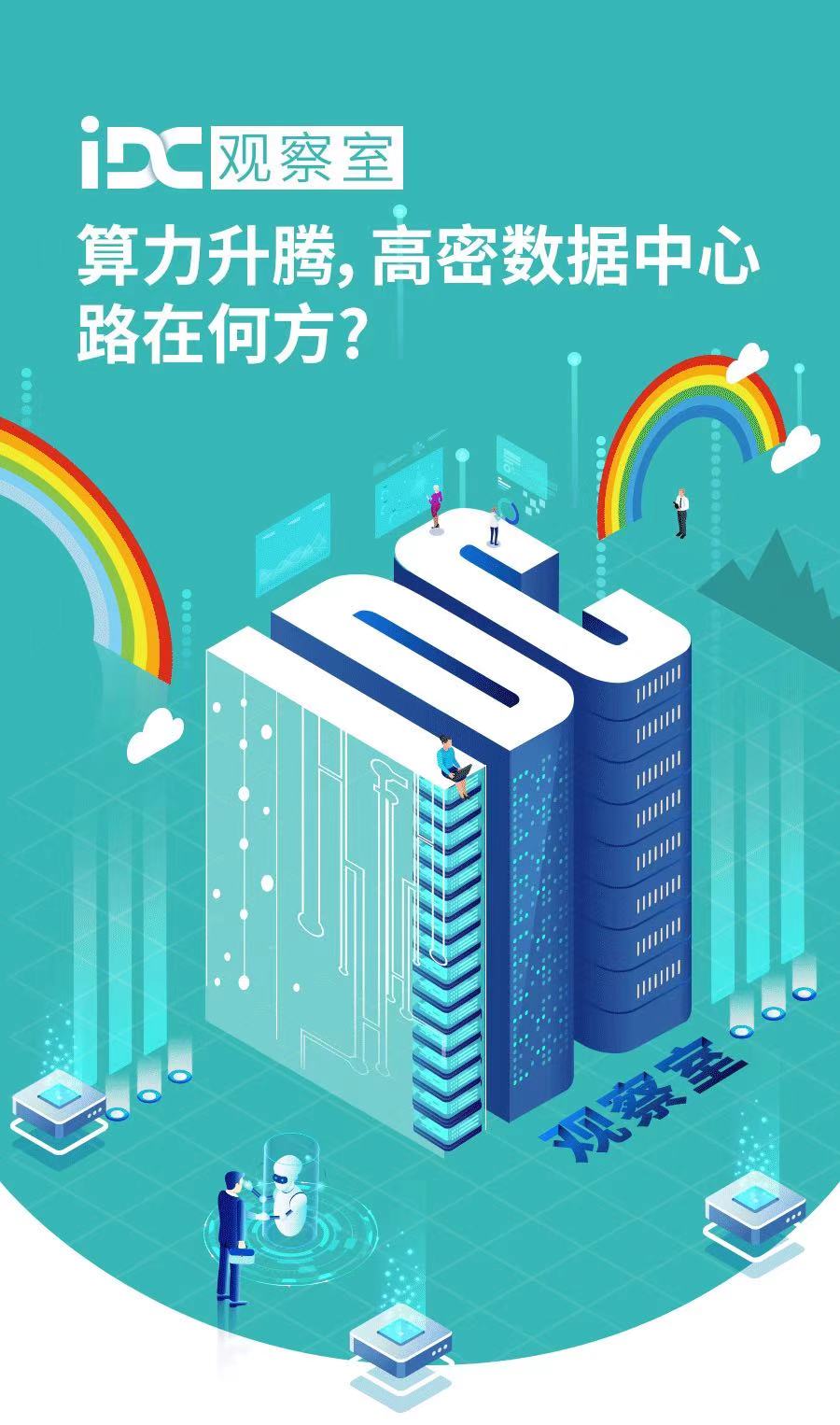
Guide:
The industry is also constantly adapting to the new landscape of technology. With the steadily improved AI algorithm quality and the continuously enhanced LLM robustness, we humans rapidly ushered an era of computing power. Next, we will further elaborate the data center - the driving force of digital economy in all rounds in the new situation for our readers in " IDC Watch".
Higher Density - One of the Essentials in Digital Economy Development
With the booming development of technologies such as AI, 5G, and cloud computing, data is accelerating its expansion as a new factor of production. Prediction of IDC: the global data volume is expected to reach 175ZB by 2025. As a modern factory for data storage and processing, the data center takes a daunting task of "computing power supply" and "data backbone", boosting the growth of digital economy. It is therefore known as a "backstage hero" in the digital era.
By closely observing the recent trend of data center , it becomes evident that the term "High-Density" has become inextricably linked with the "Data Center". High-density data center is gradually becoming a popular solution for computing power supply to cope with the soaring demand for computing power. Compared with the traditional data center, the high-density data center can make better use of confined space and resources, improve energy efficiency, and reduce environmental impact.
High-density has gradually become an irresistible trend of the data center industry. As mentioned in the "Three-year Action Plan for the Development of New Data Center (2021-2023)" issued by MIIT, acceleration of computing power and efficiency level is the core of intensive, high-density and intelligent construction of an innovative data center. In addition to policy support, the market performance also illustrates this: according to CDCC research, the application of cabinets with more than 8kW power density in domestic data centers increased from 11% (2021) to 25% (2022), the proportion of high-power cabinets increased significantly.
High-density development has become the next essential in data center industry . However, it is worth noting that although high-density data centers can provide great convenience for enterprises to expand infrastructure, and can also meet the current complex computing needs of such as artificial intelligence and data science, there is no better or worse between high-density and traditional data centers: the two complement each other and provide flexibility for customers with different demands in terms of workload type, budget and operational requirements.
Unveiling the Power Consumption Femands and the Transformation Challenges of High-density Data Center
In recent years, all industries have accelerated their digital transformation. Enhancing business resilience with data intelligence has become an inevitable course in enterprise development. The development of generative AI is a promoter for the explosive growth of data and computation. In this context, the computation of data center is getting larger, and the required computing efficiency is also increasing. Therefore, in the case of increasingly tight data center resources, especially in first-tier cities, the advantages of data center can only be maximized by improving the computing power, storage and transmission capacities in the unit area of computer room, so that the computing and storage demands in the big data scenario can be met.
Someone said that we humans have now entered the "golden age of computing power", and the hardware power consumption is also "soaring" with the sharp rise in computing power demand. With the rapid popularization of AI technology, AI chips are evolving in the direction of advanced computing power and higher integration. However, the more advanced process also brings a huge power consumption. GPU, which is wildly used in AI inferencing and training, can serve as an example. According to the "General Report of China Data Center Infrastructure Product Market 2021-2022", by 2025, the TDP of x86 CPU chips in data centers will increase to about 350W, the TDP of ARM CPU chips will increase to about 600W, and the TDP of NPU/GPU chips for AI computing will be increased to about 750W. It can be seen that the rising power consumption of hardware will challenge the data center greatly.
Furthermore, the growing demand for large-scale data processing and complex computing are also expanded into science, engineering and business services, high-performance computing (HPC) is becoming a central enabler to technological change. HPC is a powerful solution with higher requirements on density, heat and bandwidth. HPC can use multiple computers and storage devices in an aggregated architecture to process mass data at an extremely high speed, assisting in exploration of some major challenges globally in fields of science, engineering, and business. According to Hyperion Research, "the global HPC market size is expected to reach 44 billion US dollars by 2022". The data center is confronting with double challenges in heat and power density generated from "simultaneous operation of multiple high-performance computers".
It is important to note that high-density data centers not only enhance performance and reduce physical space requirements, but also higher requirements for technologies such as electricity, cooling, operation, maintenance, and security. Due to the fact that data centers are truly "energy hog", and the green and low-carbon data center industry is developing vigorously in China, clarified and detailed energy efficiency optimization indicators have also been introduced all over the country. Last year, Shanghai pointed out that by 2025, the comprehensive Power Usage Effectiveness (PUE) of new large data centers in industry cluster will be reduced to approx 1.25. Beijing issued new regulations last month: for data centers that have been built and operated stably for more than one natural year, as well as renovated and expanded data centers, must adhere to a PUE limit of 1.3; whereas new data centers should meet a PUE entry value of 1.2. As an important index to evaluate the energy efficiency of data centers, PUE is of great significance in measuring the energy consumption of data centers. It can be seen that data centers need to try their best to prevent the chip from overheating caused by mass computation and inference in the process of high-density development, so as to achieve energy-saving and cost-reducing.
Embrace a Future of Opportunities and Challenges
Computing power - unlimited potential makes infinite possibilities According to Huawei's "Intelligent World 2030" report, the world will enter the YB (yottabyte) data era by 2030, with global data increasing by 1YB annually. "Compared with 2020, general computing power will increase by 10 times, AI computing power will increase by 500 times, and computing power demand will reach a hundredfold growth in a decade, and this will become the norm."
In the past decade, companies such as Amazon, Facebook, Google, and Microsoft have made significant strides in high-density development within a relatively manageable scale. This is enough to see that the great potential of high-density trend in the future has become common knowledge in the industry. In view of this, as an infrastructure provider proficient in high-performance ultra-large data centers, Chayora has also made a prospective deployment in China: in the Ingenuity, a new generation of high-density data center solution of Chayora, each rack can obtain up to 40KW that is powerful enough to support various data operations such as LLM training and inferencing. Chayora's insight and confidence in high-density data center is evident.40KW的功率,能够有力支持大模型训练和推理等类型的数据运算,足以见得其对高密数据中心的洞察与信心。
In the past decade, companies such as Amazon, Facebook, Google, and Microsoft have made significant strides in high-density development within a relatively manageable scale. This is enough to see that the great potential of high-density trend in the future has become common knowledge in the industry. In view of this, as an infrastructure provider proficient in high-performance ultra-large data centers, Chayora has also made a prospective deployment in China: in the Ingenuity, a new generation of high-density data center solution of Chayora, each rack can obtain up to 40KW that is powerful enough to support various data operations such as LLM training and inferencing. Chayora's insight and confidence in high-density data center is evident.
In the context of achieving "carbon peaking and carbon neutrality", the top priority for the development of data center industry is to promote energy-saving and cost-reducing. As a "cornerstone" of the digital economy, the green and low-carbon development of data centers is crucial. The density of data centers in the future will continue to grow with the rapid changing of AI technology. For enterprises, the only constant in the fast progress of the ages is change. To embrace more opportunities and possibilities, Chayora follows the trend of the Times and rises to meet the challenges brought by the new situation of high density.
1302, 13/F, Spaces Sun House, 90 Connaught Road Central, Sheung Wan, Hong Kong
+852 3653 5268
RM01-06,Level 24 China World Trade Center Office 2 No.1 Jianguomenwai Avenue
Chaoyang District
Beijing, China, 100004
RM116, Level 15 Yuesheng Mansion No.1 Wuning Road South Jing'An District
Shanghai, China, 200042
